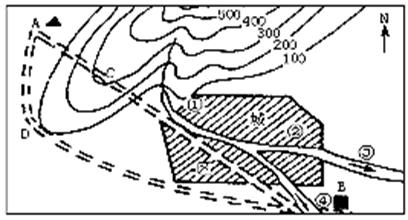阅读理解。
After spending three days in a wheelchair, I was ready to quit. Not only did I have to battle cracked
and uneven pavements, I had to deal with the bad attitude of pedestrians and a cold rain. But I didn't give
up because of people like Tiffany Payne.
Payne, who has been using a wheelchair for 18 years, laughed at me,
"Imagine trying to get around town in the winter," she said.
I could see her point: You're battling to get to a doctor's appointment, but no one has shoveled after a
big snowfall. Your choices: Move out and risk getting stuck, or reschedule the appointment.
Those of us fortunate enough to get around on our own two legs don't give a second thought to the
person in a wheelchair next to us at a crosswalk. That would require us to look down.
So I decided to try using a wheelchair to get a sample of what their lives are like. It wasn't long before
I saw that people who use wheelchairs are forced to deal with a lot of trouble.
During my experiment, I was ignored by store staff while shopping and bumped into by inattentive
walkers without so much as an apology. Some people even gave me angry looks as if I were the one at
fault.
Once in a store, a woman bumped into me trying to get to the new iPad. She didn't say, "Excuse me."
When salespeople did offer assistance, they talked to people who were with me, instead of me. I
wanted to yell, "Hey, I'm down here!"
Some salespeople talked to me as though I were a child or acted like they didn't want to be bothered
with me.
People who use wheelchairs want to be treated like everyone else. They also comprehend, so you
don't have to speak to them in a childlike, sing-song voice. It's not very appealing, especially when the
person is an adult. And most importantly, remember they have feelings that can be hurt just like yours.
Spending three days in a wheelchair made me look differently at those who have to use one. I hope
you do the same.
1. The author writes the story to .
A. help those in wheelchairs gain self-confidence
B. share his experience of acting as a wheelchair user
C. ask people to show sympathy for those in wheelchairs
D. call on people to respect and help those in wheelchairs
2. During his three days in a wheelchair, the author met all of the following difficulties EXCEPT .
A. bad road conditions
B. poor attitudes of ordinary people
C. terrible medical service
D. bad weather
3. What can we conclude from the article?
A. A wheelchair user may feel offended when you do not address him or her directly.
B. Assistants in big stores are usually kind to people in wheelchairs.
C. People in wheelchairs should fight for fair treatment.
D. People in wheelchairs are usually hard to get along with.
4. Which of the following statements would the author agree to?
A. Look down on a person in a wheelchair.
B. Speak to a person in a wheelchair in a sing-song voice.
C. Treat a person in a wheelchair as you would treat any other person.
D. Offer assistance to a person in a wheelchair without asking for permission.
1-4: DCAC

